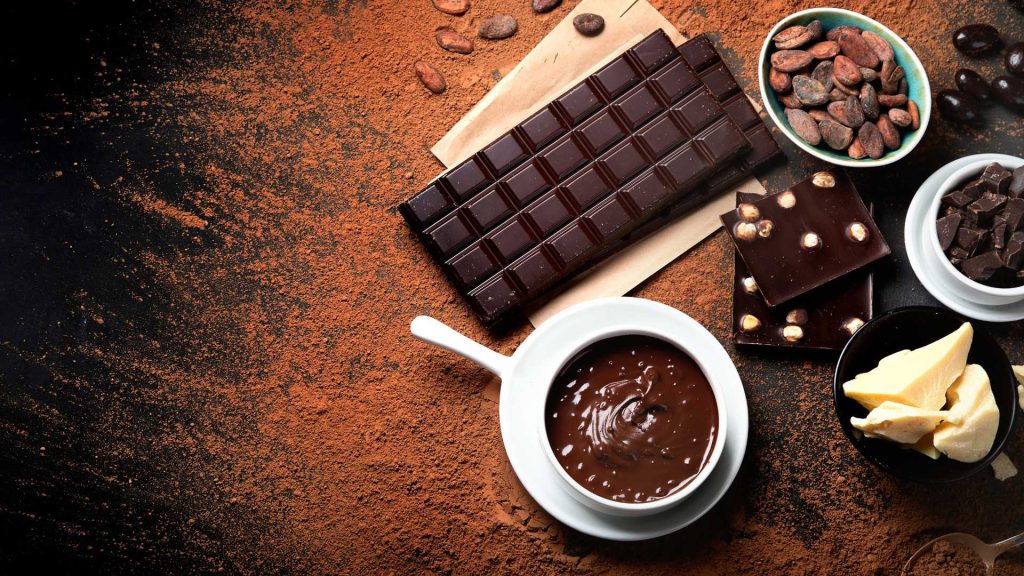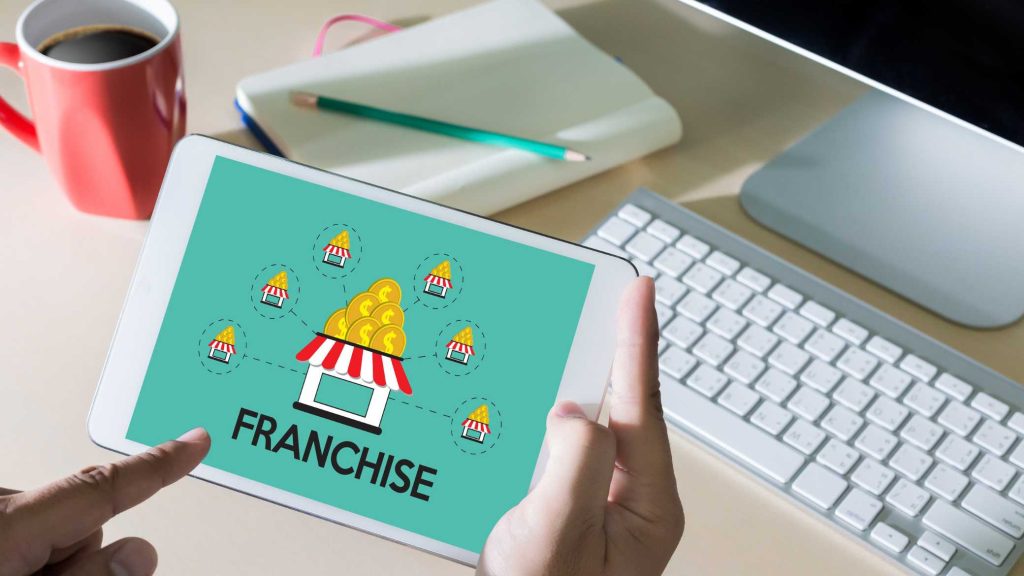How to Start The Chocolate Room Franchise in Kerala – Comprehensive Guide 2025
The Chocolate Room : Kerala has always been a land of rich flavors, sweet indulgences, and a growing café culture. From the backwaters of Alleppey to the streets of Kozhikode, people love to gather over tea, coffee, desserts—and increasingly, premium chocolate cafés. In this climate, The Chocolate Room—a well-known chocolate and dessert café brand—is expanding its footprint in Kerala with opportunities for franchisees. If you’re considering entering the café or dessert café business in Kerala.
Table of Contents
This Blog will walk you through everything: the business model, investments needed, revenue and profitability estimates, challenges, operational steps, location considerations, marketing, and how to build a sustainable and profitable franchise.
What is The Chocolate Room?

The Chocolate Room (TCR) is a chocolate café‐dessert concept known for offering premium desserts, handcrafted chocolates, chocolate beverages, hot chocolates, waffles, sundaes, gourmand snacks, savory bites, and café style drinks. The appeal lies in combining the dessert experience with a café ambience—sweet treats, chocolates, dessert experiences, and a hangout space. Over time, TCR has grown across many Indian states, multiple cities, and even internationally, via different formats like kiosks, compact cafés, standalone dessert cafés, and lounge/diner formats.
Why Kerala Is Attractive for The Chocolate Room Franchise
Before investing, it is essential to understand why Kerala can be a strong market for dessert cafés and chocolate‐centric brands:
- Affection for sweets and beverages: Kerala’s culture includes strong affinity for sweet snacks, tea, coffee, and dessert shops. Families, students, tourists, and professionals all look for places to relax, socialize, and indulge.
- Strong tourism industry: Hill stations like Munnar and Wayanad, beaches like Kovalam and Varkala, backwaters, and tourist influx create high footfall in several districts. Dessert cafés can benefit in such tourist‐heavy areas.
- Education hubs and youth culture: Cities like Thiruvananthapuram, Kochi, Kozhikode, Kannur, Thrissur have colleges and universities, creating young, experimental consumers who enjoy café & dessert hangouts.
- Growing disposable income & café culture: Rising incomes, exposure to global trends, and frequent usage of social media make café aesthetics, dessert experiences, and Instagrammable places more in demand—a great niche for chocolate dessert cafés.
- Local cuisine synergy: Kerala consumers are used to high quality food, good presentation; a premium dessert brand that provides hygienic, innovative chocolate offerings with good ambience can stand out.
- Availability of commercial spaces: Malls, shopping complexes, tourist zones, and high streets in Kerala often have spaces ideal for café formats. Though rents can be high in major zones, many secondary locations also offer opportunities.
Given these factors, a well‐implemented The Chocolate Room franchise has good potential to do well in Kerala.
Franchise Models & Formats Offered by The Chocolate Room

The Chocolate Room provides multiple franchise models, which allow flexibility depending on investment capacity, space availability, and market demand. Knowing these models helps you pick what suits your budget and brand goals.
Here are the common models:
| Model | Typical Space / Area Required | Description / Where Suited |
|---|---|---|
| Kiosk Model | ~ 60-200-300 sq. ft. | Small setups inside malls, food courts, high foot traffic corridors. Minimum infrastructure, lower cost, takeaway plus dessert portions. |
| Compact Café Model | ~ 400-700 sq. ft. | Medium sized café with seating, dessert display, possibly “live kitchen” or dessert prep in front view. Suitable in malls or busy commercial streets. |
| Standalone Model / Full Café | ~ 800-1000 sq. ft. or more | Fully equipped dessert café with larger seating area, full menu with savory, beverages, ambiance, décor, lighting etc. Best in prime locations or high visibility zones. |
| Lounge / Diner or Premium Format | > 1500-2000 sq. ft. | High end experience, larger seating, more elaborate décor, possibly evening business, events, dessert + full café + beverages + possibly alcohol (if permits) in some regions. |
Each model differs in investment, revenue potential, staff requirements, operational complexity, and risk. In Kerala, you may find Compact and Standalone models most viable given demand and rental costs.
Also Read : How To Apply TeaMax Cafe Franchise : Comprehensive Guide 2025
Investment Required for The Chocolate Room Franchise in Kerala
Starting a The Chocolate Room franchise requires capital—not just for branding or franchise fee, but for interior, equipment, staffing, licenses, marketing, working capital, etc. Below are rough cost ranges based on the model chosen (Kiosk, Compact, Standalone). These estimates are derived from public data across India and adjusted for typical costs in Kerala; actual numbers will vary depending on city, location, and specific site conditions.
| Model | Franchise / Brand Fee | Fit-out / Interior / Décor & Equipment | Inventory / Initial Stock | Working Capital + Miscellaneous Costs | Estimated Total Investment |
|---|---|---|---|---|---|
| Kiosk Model (60-200 sq. ft) | ₹2.5 – ₹3 lakh | ₹7-12 lakh (counter, display, lighting, basic seating, small kitchen equipment) | ₹1-2 lakh | ₹1-2 lakh for staff, utilities, permit work, marketing | ~ ₹10 – 15 lakh |
| Compact Café (400-700 sq. ft) | ₹5 lakh | ₹15-25 lakh (interiors, seating, lighting, better kitchen & display, dessert prep area) | ₹2-3 lakh | ₹2-4 lakh for operations until break-even | ~ ₹25 – 35 lakh |
| Standalone Café (800-1000+ sq. ft) | ₹10 lakh | ₹30-45 lakh (premium interiors, more fixtures, larger kitchen, display, seating, ambience) | ₹3-5 lakh | ₹3-5 lakh for staff salaries, utilities, marketing, licenses | ~ ₹45-60 lakh or more |
Additional recurring costs include royalty, marketing/advertising fees (if any), rent, staff salaries, raw materials, utility bills, packaging costs, etc.
Revenue Potential & Profitability Estimates

To judge whether the investment is worthwhile, one must estimate how much revenue can be generated, what costs will be, and what profits can be expected.
Revenue Sources
- Dessert and Chocolate Sales: Cakes, brownies, chocolate platters, artisan chocolates, dessert juices, waffles, sundaes, etc. These typically have high profit margins.
- Beverages: Coffee, hot chocolates, specialty chocolate drinks, shakes, milkshakes, etc. These contribute a large volume of sales especially in café traffic.
- Savory Items & Snacks: Light snacks, finger food to complement drinks/desserts.
- Retail Chocolate and Takeaway Items: Gift boxes, chocolate bars, packaged chocolates, hampers—especially around festivals in Kerala.
- Ambience / Experience Premiums: Premium pricing for elevated ambiance, presentation, and service. People often pay extra for décor, seating comfort, location, Instagrammability.
Cost Structure
Key cost heads include:
- Cost of Goods Sold (COGS): Raw materials (chocolate, milk, cream, sugar, flavorings, packaging materials), waste, spoilage etc.
- Staffing Costs: Baristas, dessert chefs, helpers, serving staff. Salary expectations in Kerala differ by city—Thiruvananthapuram and Kochi will be higher, smaller towns less.
- Rent / Lease: Prime locations cost more. Malls, high streets expensive. Secondary zones cheaper but possibly less footfall.
- Utilities & Maintenance: Electricity (especially air conditioning, lighting and kitchen equipment), water, HVAC, exhaust, cleaning.
- Marketing and Promotion: Initial launch marketing, ongoing social media ads, local promotions.
- Royalties / Brand Fees: The Chocolate Room charges a royalty on net sales (this is around 8% in many models), plus possibly marketing levies.
Also Read : How to strat a Tea Day Franchise in kerala, India : Comprehensive Guide 2025
Profit Margins & Break-Even
Based on public franchise data:
- Kiosk model franchises typically see break‐even within 18‐24 months under good conditions.
- Compact café models may take 24-30 months to recover investment.
- Standalone premium cafés might take 30-36 months or more depending on location, rent, and costs.
For profit margin: after all costs, net margins might lie between 15-25% for well‐managed outlets in good location, possibly more on dessert items with good markup. If costs (rent, staffing) are high, margins may shrink.
Royalty, Brand Fee, and Contract Terms
Any franchisee must understand what ongoing fees and contractual terms will apply. For The Chocolate Room:
- Royalty Fee: Approximately 8% of net sales in many models.
- Franchise / Brand Fee: Varies by model (for kiosk, compact, standalone). As above, smaller models incur lower fees; larger models incur higher fees.
- Term of Agreement: Usually five (5) years, with possibility of renewal after term.
- Marketing / Ad Levy: Some marketing fee may be required or shared for brand campaigns or mall/complex advertising.
- Support Systems: TCR provides site selection assistance, operations manuals, staff training, merchandising, supply chain connections, software / POS systems.
Understanding these terms, and getting them in writing, is critical before signing the agreement.
Location & Real Estate Considerations Specific to Kerala

Location is extremely important for café franchises. Here are factors particularly relevant in Kerala:
- High tourist areas: Places like Munnar, Alleppey, Wayanad, Varkala, Kovalam, and backwater destinations are excellent for dessert and café franchises. Tourist and seasonal traffic helps.
- Shopping malls and multiplexes: Kochi, Thiruvananthapuram, Calicut have malls with good footfall. Kiosk or compact format works well here.
- Educational institutions & colleges: Areas around universities and colleges in cities like Thrissur, Kozhikode, Kannur, etc. Students are prime customers.
- High streets and commercial zones: Business districts with office traffic also offer good potential for breakfast, coffee, dessert, evening traffic.
- Festivals & Occasions: Kerala has many festivals—Onam, Vishu, Christmas, Eid, etc.—which drive high demand for sweets and chocolate gifts. Being in or near shopping zones helps.
- Visibility and frontage: Café with visible façade, good display, comfortable seating, alluring smell (especially chocolate) help draw footfall.
- Rent vs Revenue balance: Prime areas have high rents. Need to ensure projected revenue justifies rent; sometimes secondary areas with good traffic may offer better margins.
Operational Requirements
To run a The Chocolate Room franchise efficiently, you need to set up operations carefully. Key operational aspects include:
- Interior Décor, Ambience & Store Design
The ambiance must reflect premium, indulgence, comfort. Lighting, display counters (especially for desserts & chocolate items), seating comfort, cleanliness, equipment layout are important. - Kitchen / Dessert Preparation Setup
Dessert & chocolate preparation can be elaborate. Equipment for baking, heating, chocolate melting, refrigeration, display, pastry work is needed. Proper ventilation, hygiene, storage, backup power are needed since desserts are sensitive to temperature and spoilage. - Staffing & Training
Staff should include dessert chefs or chocolatier, baristas, serving staff, cashier, helpers. Training in dessert preparation, consistency, quality, customer service, hygiene, waste reduction. - Menu Management & Innovation
Keeping menu fresh with seasonal desserts, limited editions, festive specials. Balance high margin dessert items with complementary products that pull traffic (beverages, snacks). - Supply Chain & Inventory
Reliable suppliers for chocolates, quality cocoa, flavor ingredients, packaging, display glassware, etc. Maintain stock levels carefully—desserts may spoil quickly, so avoid over-stocking. - Licensing & Legal Compliance
Food safety license, health permits, municipal approvals, GST registration. Standards on hygiene, safety, labeling. Especially in Kerala, water, waste, local health inspections may have specific requirements. - POS, Software, & Reporting
Good billing system, inventory tracking, reporting of sales, wastage, cost of goods, profit margin. Control of data helps optimize operations.
Marketing, Customer Experience & Branding
Even a well-built dessert café needs strong marketing and customer experience to succeed.
- Local Marketing: Grand opening events, tastings, flyers, local social media (Instagram reels, reels showing chocolate pouring, interior decor) attract attention.
- Digital Presence: Strong presence on G Maps, online directories; reviews; social media content (dessert photos, chocolate art, videos). Kerala consumers are active online.
- Promotions & Offers: Combo offers (dessert + beverage), loyalty cards, festival specials, seasonal menus, discount vouchers.
- Customer Feedback & Service: Prompt service, clean atmosphere, attention to detail. Handling complaints well. The experience often drives repeat customers more than price.
- Aesthetic & Instagrammable Ambience: Many customers, particularly younger ones, value café aesthetics for photos and social media. Good décor, lighting, display matters.
- Festivals & Events: Plan special items during Onam, Vishu, Christmas, New Year, Valentine’s Day. Gift hampers around festivals help boost sales.
Revenue & Profit Projections in Kerala
To give prospective franchisees a concrete view, here is a hypothetical projection for a Chocolate Room outlet in Kerala (e.g., Kochi or Thiruvananthapuram), assuming a Compact model café.
| Metric | Assumption | Estimate (Monthly) |
|---|---|---|
| Space / Format | Compact Café, ~500-700 sq. ft., seating plus display | |
| Customers / Day | 80-120 customers (weekday + weekend average) | |
| Average Order Value | ₹200-₹300 (dessert/beverage combo) | |
| Monthly Gross Sales | ₹4,80,000 – ₹10,80,000 | |
| COGS (Raw Material + Packaging) | ~30-35% of sales | |
| Staffing + Utilities + Rent | ~25-30% (rent in prime location might be higher, smaller city lower) | |
| Royalty & Brand Fees | ~8% net sales | |
| Marketing / Miscellaneous | ~3-5% of sales | |
| Net Profit Margin After All Costs | ~15-25% in good months | |
| Estimated Monthly Profit | ~₹72,000 – ₹2,70,000 depending on location & volume | |
| Break-Even Period | Estimated 18-30 months for Compact format, shorter perhaps in high footfall zones |
For Kiosk model, investments are lower, but sales and profits per month will also be lower; the ROI may come sooner (possibly 12-20 months) if cost control is tight. Standalone premium outlets may take longer to break even but yield higher absolute profits once running well.
Challenges & Risks
While the potential is strong, there are several risks and challenges to be prepared for:
- High initial capital in premium locations: Rent and interior cost in malls or prime high streets are steep.
- Seasonal fluctuations: Demand may dip during heavy monsoon or off-tourist seasons.
- Wastage / Spoilage: Desserts and chocolates are perishable; improper storage or slow sales can lead to losses.
- Competition: Local sweet shops, ice-cream parlors, dessert franchises, bakeries—need to stand out in quality and experience.
- Operational complexities: Maintaining consistency, quality, and presentation demands good management.
- Regulatory compliance: Food safety, permits, inspections, hygiene rules can be strict.
- Marketing and customer retention: One time attraction is easier; keeping customers coming back is harder.
Mitigation strategies include choosing locations carefully, keeping menu lean at first, mastering operations before scaling, focusing on local taste preferences, controlling costs, and sound inventory management.
How to Start – Step-by-Step Process for Kerala

Here is a practical roadmap for starting The Chocolate Room franchise in Kerala:
- Market Research & Feasibility Study
- Survey local dessert café demand in the city/area.
- Foot traffic study in malls, commercial streets.
- Competitor analysis: what local dessert shops exist, their pricing, customer reviews.
- Understanding rental rates, utility costs.
- Choose Format and Model
- Based on your budget, capacity, location; decide whether Kiosk, Compact Café, or Standalone.
- Financial Planning & Funds Mobilization
- Arrange funds for franchise fee, interior, equipment, inventory, working capital.
- Consider loans or partnerships if needed.
- Location Identification & Lease Negotiation
- Prioritize visibility, accessibility, traffic.
- Negotiate lease terms: rent, duration, maintenance, signage rights.
- Franchise Agreement & Legal Formalities
- Review contract terms—royalty, fees, responsibilities, term length.
- Obtain necessary licenses: food license, municipal approvals, health/hygiene permits, GST etc.
Buy Now : Food Delivery Website
- Design & Build-out
- Interior design, display counters, seating layout, lighting, décor as per the brand’s style guidelines.
- Kitchen & dessert prep area setup with proper equipment, refrigeration, chocolate melt stations etc.
- Staffing & Training
- Hire staff for dessert preparation, service, cash counter, cleaning.
- Undergo training from the franchisor—culinary standards, customer service, operations, hygiene.
- Supplier & Inventory Setup
- Identify approved suppliers for chocolate ingredients, packaging, beverages, display items.
- Setup inventory management systems to avoid overstocking / understocking.
- Marketing and Launch
- Pre-launch promotions through social media, influencers, local events.
- Grand opening with offers, sample items, freebies to attract footfall.
- Operations, Quality Control, and Feedback Loop
- Monitor daily operations, sales, costs.
- Collect customer feedback.
- Adjust menu offerings, staff schedules, pricing if needed.
- Scaling & Expansion
- Once first outlet is stable and profitable, consider opening additional outlets, or converting to higher formats.
- Consider master franchise opportunities for districts or cities.
Key Success Factors
From observing successful TCR outlets and other dessert café franchises, certain factors repeatedly contribute to success:
- Menu excellence: Quality, taste, presentation, variety. Signature desserts, seasonal specials, limited editions.
- Ambience & experience: Comfortable seating, pleasing décor, cleanliness, good service. People stay longer and spend more in pleasant environments.
- Location: High footfall, visibility, accessible parking or transit.
- Cost control: Managing raw material costs, minimizing waste, efficient staffing.
- Brand consistency: Maintaining quality, following brand SOPs (standard operating procedures), using brand-promoted décor, packaging etc.
- Marketing & brand awareness: Social media, influencer promotions, local collaborations, festive marketing.
- Strong customer service: Friendly, attentive staff, responsive service. Return customers often make up significant portion of revenue.
Summary: Pros, Cons, ROI Outlook
Pros
- Established brand recognition.
- Proven dessert café model with high demand.
- Diversified revenue streams—desserts, beverages, takeaways, retail chocolate.
- Support from franchisor in operations, training, marketing.
- Ability to tap into Kerala’s growing café & tourism culture.
Cons
- High initial capital, especially in premium locations.
- Profit margins sensitive to cost of ingredients, waste, seasonality.
- Competitive market.
- Dependence on foot traffic and tourism.
ROI Outlook
- Kiosk model: ~12-20 months break-even, modest profits to start.
- Compact café: ~18-30 months depending on location & sales.
- Standalone premium café: ~24-36 months break-even; higher profits afterwards.
Conclusion

Starting a The Chocolate Room franchise in Kerala presents a sweet opportunity for dessert lovers, café entrepreneurs, and investors willing to commit. With the right format, location, investment, and operational discipline, a TCR outlet can become a profitable venture. Kerala’s rich dessert culture, tourist influx, educated young population, and café culture provide favorable conditions. However, success won’t be automatic—costs, quality, service, location, and continuous marketing matter a lot.
Buy Now : Launch Your Online Store – Masterclass
If you are considering taking the plunge, prepare a detailed plan, ensure adequate funding, pick your format wisely, and leverage The Chocolate Room’s brand support fully. With perseverance and smart decisions, you can build a thriving dessert café that delights customers and generates sustainable profits.
Disclaimer: The figures, estimates, and projections in this blog are based on publicly available data and general market observations. Actual costs, revenue, and profitability may vary depending on your specific location, lease terms, supplier rates, competition, and implementation. Prospective franchisees are advised to conduct independent due diligence and consult financial/ legal experts before committing.



